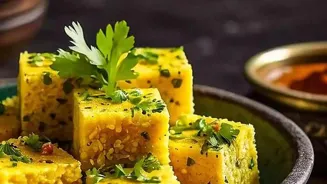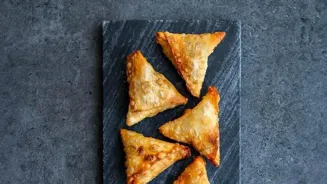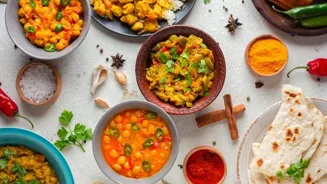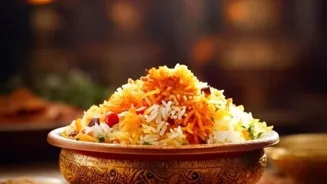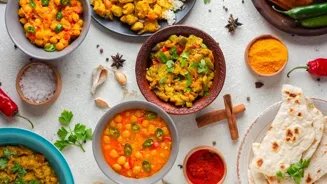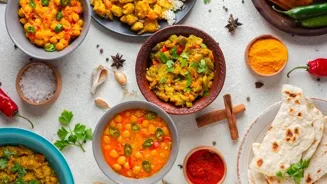Discover the secrets to making the perfect fluffy Dhokla - a classic Indian treat with expert guidance
Dhokla, that soft, spongy, and utterly delightful steamed cake, is a staple snack in many Indian households,
especially in Gujarat. But achieving that perfect fluffy texture can sometimes feel like a culinary challenge. Fear not, aspiring home bakers!
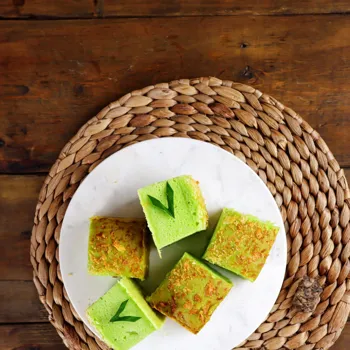
This article unveils the secrets to mastering the art of dhokla making. We will explore key ingredients, precise techniques, and vital tips to ensure your dhokla turns out light, airy, and bursting with flavor every single time.
Get ready to impress your family and friends with this classic Indian treat, made with love and a touch of expert guidance. Forget store-bought versions; homemade dhokla is a different experience altogether.
The key to great dhokla: quality besan, sooji, souring agent, sugar, and perfect tempering
The foundation of a great dhokla lies in the quality and proportion of its ingredients. Besan, or gram flour, is the undisputed star, providing the characteristic earthy flavor and structure. However, the type of besan matters. Opt for a fine variety, free from any lumps, for a smoother batter.
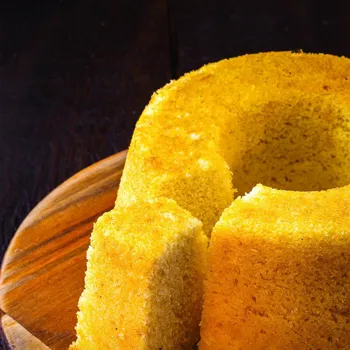
Sooji, or semolina, is another important ingredient. It helps add a delightful texture and prevents the dhokla from becoming too dense. Using the correct rava is necessary. A little of rava/sooji can do wonders to the textures. Next, we need a souring agent.
This can be curd (yogurt) or citric acid. The sourness reacts with the baking soda, creating those essential air pockets that contribute toward fluffiness. Finally, a pinch of sugar balances the flavors and adds a subtle sweetness.
For the tempering, you'll need mustard seeds, green chilies, curry leaves, and a touch of sugar. This adds a zesty finishing touch that elevates the dhokla to another level.
Making perfect dhokla: technique & ingredients balance is key
The technique of making dhokla is as important as the ingredients we put in it. Start by sifting the besan and sooji together to remove any lumps and ensure an even distribution. This important step contributes to a smoother batter, and the even distribution of air.
In a separate bowl, whisk together the curd (or citric acid with water), sugar, and salt until the sugar is completely dissolved. This step ensures that the flavors are evenly distributed within the batter.
Slowly add the wet ingredients to the dry ingredients, mixing constantly to avoid forming lumps. The most important part of making the batter is to mix gently and ensure all the ingredients are blended well. The batter should have a smooth, pouring consistency, similar to that of pancake batter.
If it's too thick, you can add a little water to adjust the consistency. Do not overmix the batter, as this can develop the gluten in the besan, resulting in a denser dhokla.
Fermentation crucial for dhokla's spongy texture; rest batter, then steam
Now comes the crucial part: fermentation. The fermentation process is what gives dhokla its signature spongy texture. Cover the batter and allow it to rest for at least 4-6 hours, or even overnight, in a warm place.
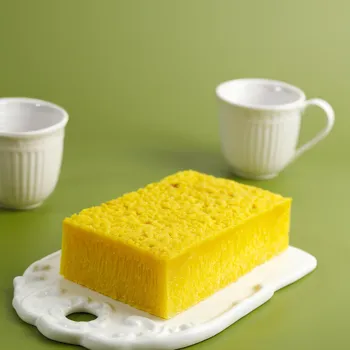
This allows the yeast to work its magic, creating air bubbles and lightening the batter. The length of time to ferment depends on the temperature. If the temperature is hot, the fermentation happens sooner than usual.
You'll notice that the batter has increased in volume and has a slightly sour aroma. This is a sign that it's ready to be steamed. Before steaming, it is important to grease the baking pan.
To ensure the dhokla doesn't stick to the steaming plate, it's essential to generously grease the plate with oil.
Adding rising agents before steaming for spongy dhokla
The final step before steaming is adding the rising agents i.e. the baking soda and fruit salt. Just before steaming, add baking soda and fruit salt to the batter. Gently fold it in until it's just combined.
Do not overmix at this stage, or you'll lose the air bubbles created by the baking soda/fruit salt. The batter will immediately become frothy and light.
Pour the batter into the greased tin and steam immediately Steam the dhokla in a preheated steamer for 15-20 minutes or until a toothpick inserted into the center comes out clean. Allow the dhokla to cool slightly before cutting it into squares.
Steaming is the most important process and steaming the batter in the correct temperature gives that spongy texture. An overcooked dhokla can lead to dense texture inside.
Prepare tempering for moist, flavorful dhokla
While the dhokla is steaming, prepare the tempering. Heat oil in a small pan. Add mustard seeds and let them splutter. Add green chilies and curry leaves and sauté for a few seconds. Add sugar and a little water and bring to a simmer. Remove from heat.
Pour the tempering evenly over the cooled dhokla. The tempering adds moisture and flavor to the dhokla, making it even more irresistible. Garnish with chopped coriander leaves and grated coconut, if desired. The final product will be a soft, spongy dhokla with a balanced sweet and tangy flavor.
